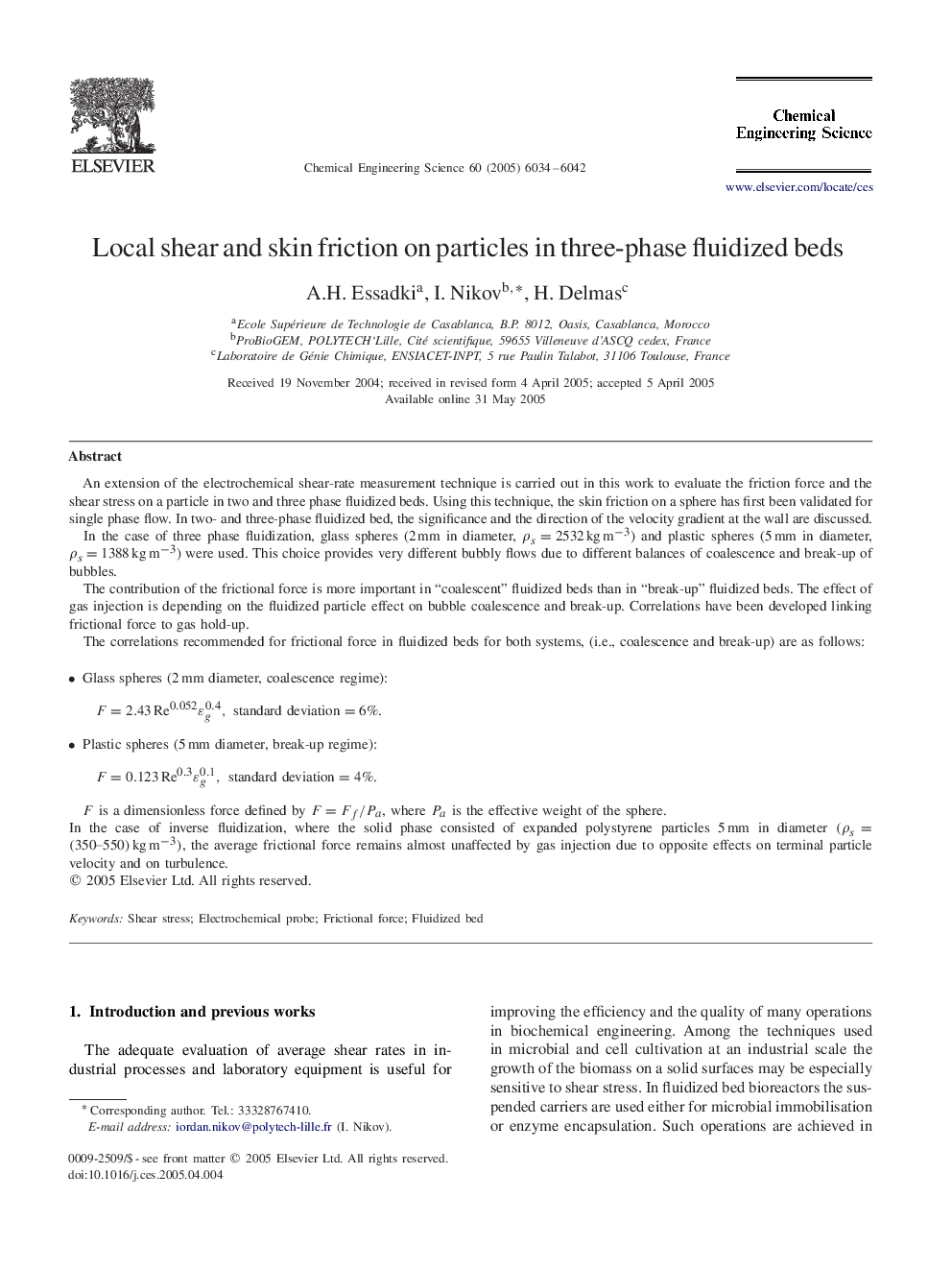| Article ID | Journal | Published Year | Pages | File Type |
|---|---|---|---|---|
| 159237 | Chemical Engineering Science | 2005 | 9 Pages |
An extension of the electrochemical shear-rate measurement technique is carried out in this work to evaluate the friction force and the shear stress on a particle in two and three phase fluidized beds. Using this technique, the skin friction on a sphere has first been validated for single phase flow. In two- and three-phase fluidized bed, the significance and the direction of the velocity gradient at the wall are discussed.In the case of three phase fluidization, glass spheres (2 mm in diameter, ρs=2532kgm-3) and plastic spheres (5 mm in diameter, ρs=1388kgm-3) were used. This choice provides very different bubbly flows due to different balances of coalescence and break-up of bubblesThe contribution of the frictional force is more important in “coalescent” fluidized beds than in “break-up” fluidized beds. The effect of gas injection is depending on the fluidized particle effect on bubble coalescence and break-up. Correlations have been developed linking frictional force to gas hold-up.The correlations recommended for frictional force in fluidized beds for both systems, (i.e., coalescence and break-up) are as follows:••Glass spheres (2 mm diameter, coalescence regime): F=2.43Re0.052ɛg0.4,standarddeviation=6%.••Plastic spheres (5 mm diameter, break-up regime): F=0.123Re0.3ɛg0.1,standarddeviation=4%.FF is a dimensionless force defined by F=Ff/PaF=Ff/Pa, where PaPa is the effective weight of the sphere.In the case of inverse fluidization, where the solid phase consisted of expanded polystyrene particles 5 mm in diameter (ρs=(350–550)kgm-3), the average frictional force remains almost unaffected by gas injection due to opposite effects on terminal particle velocity and on turbulence.
